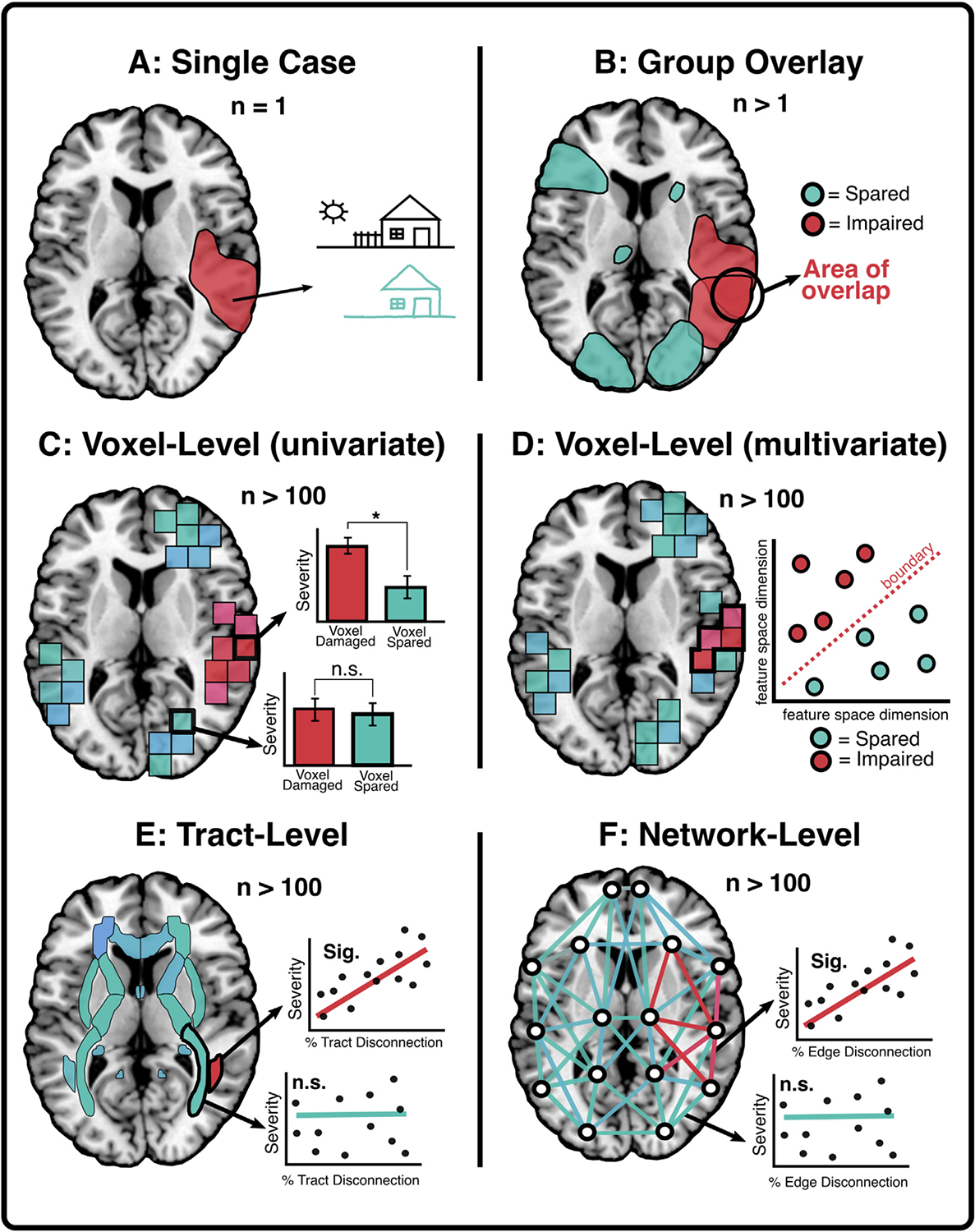Fig. 1 –

Overview of common lesion-mapping methodologies. These examples provide illustrations of different statistical approaches applied to investigate the neural correlates of visuospatial neglect. (A) Single case approaches infer that, in patients exhibiting a specific deficit (e.g., visuospatial neglect), the lesioned area (schematised in red), must be necessary for supporting the impaired function. (B) Group overlay approaches aim to identify areas of lesion overlap in groups of patients with a deficit of interest. Lesioned areas which are common across groups of impaired patients are assumed to represent critical neural correlates. (C) Univariate voxel-level approaches use mass-univariate statistical tests to identify voxels that, when damaged, are significantly associated with impairment. (D) Multivariate voxel-level methods quantify the synergistic contributions of multiple voxels (features) to build a best-fit impairment prediction model and identify regions which significantly contribute to this prediction. (E) Tract-level lesion mapping identifies white matter pathways for which the level of lesion-induced disconnection severity is significantly associated with the deficit of interest. (F) Network-level lesion mapping identifies brain network-level connections for which the level of lesion-induced disconnection is significantly associated with impairment severity.
